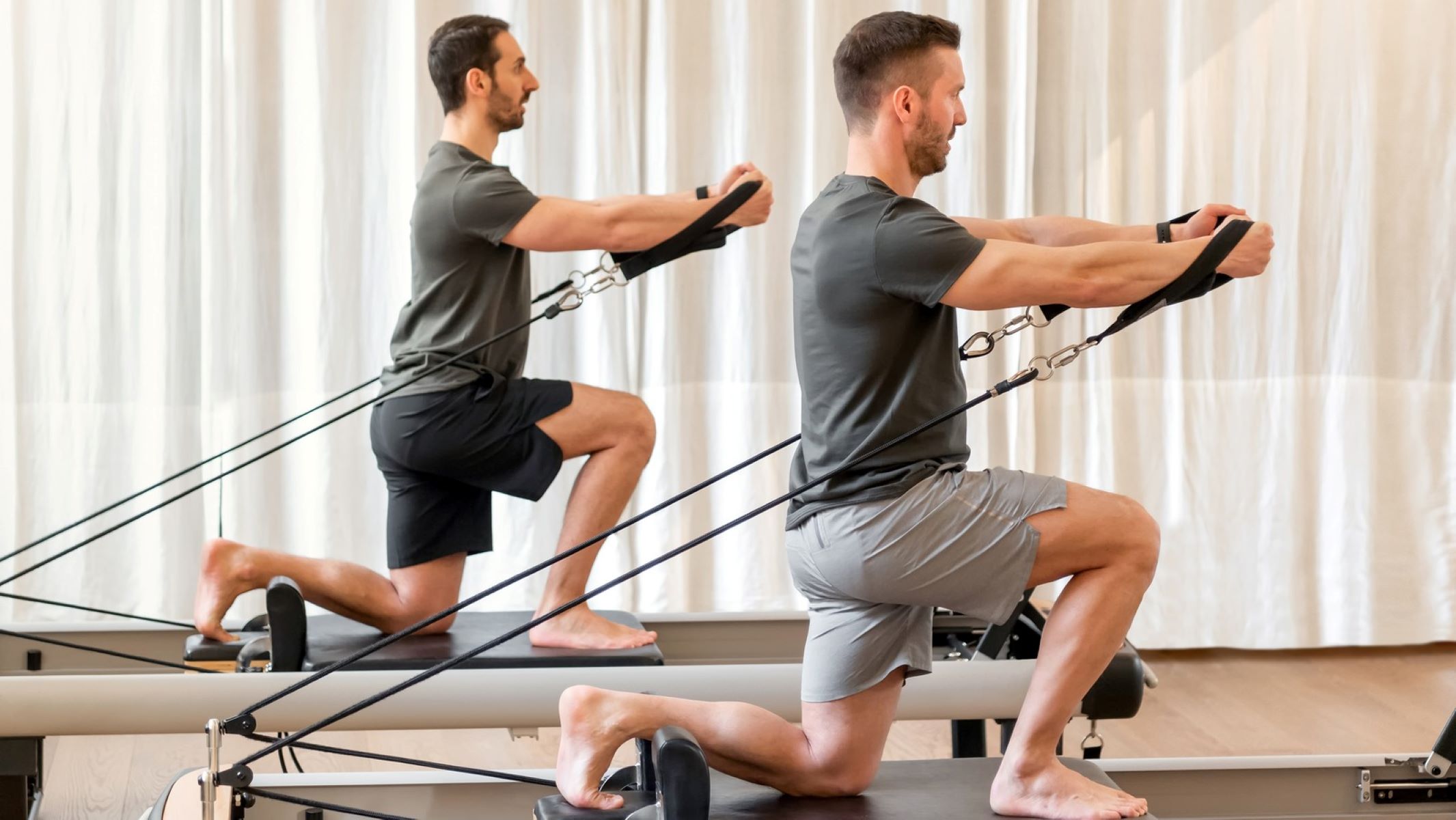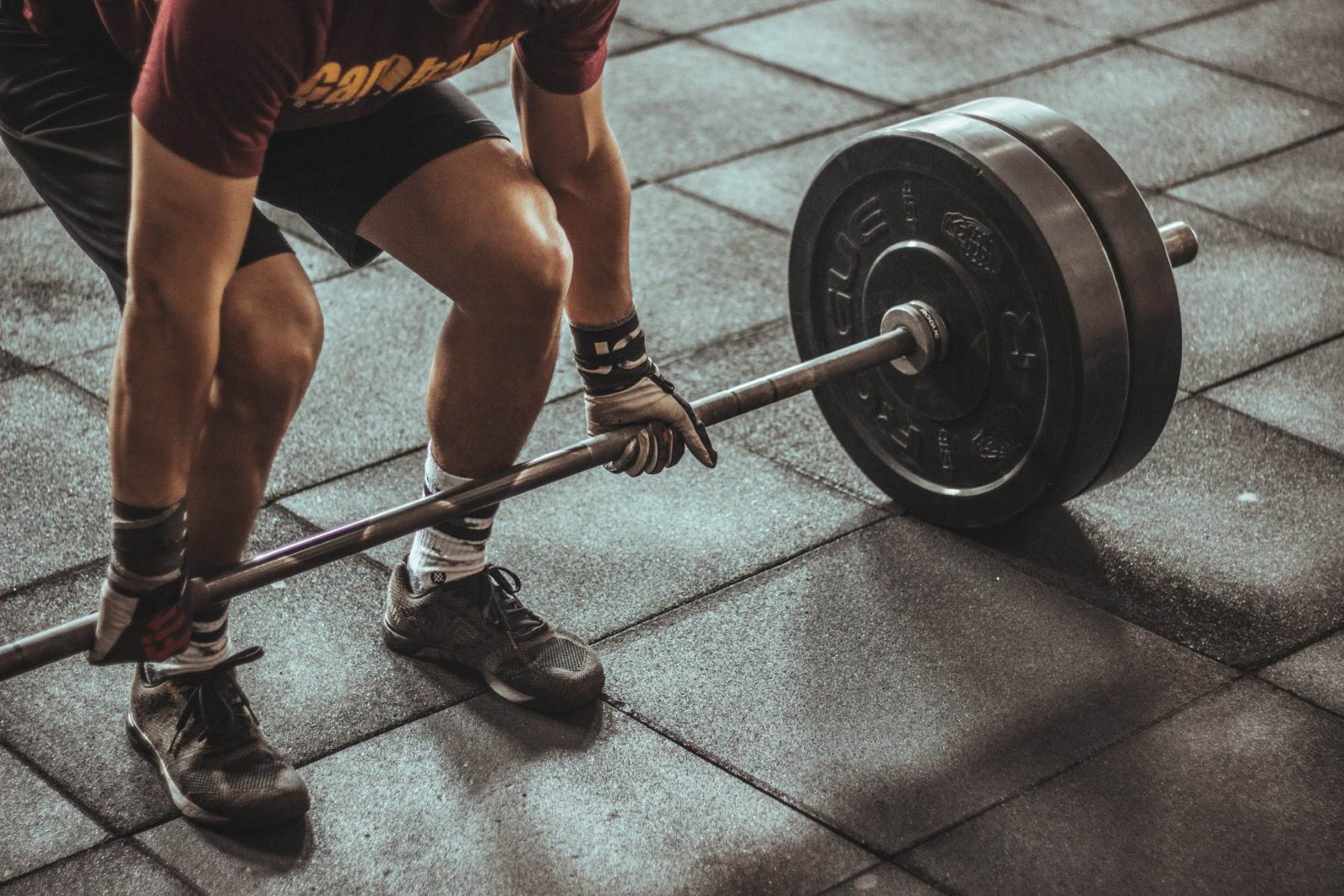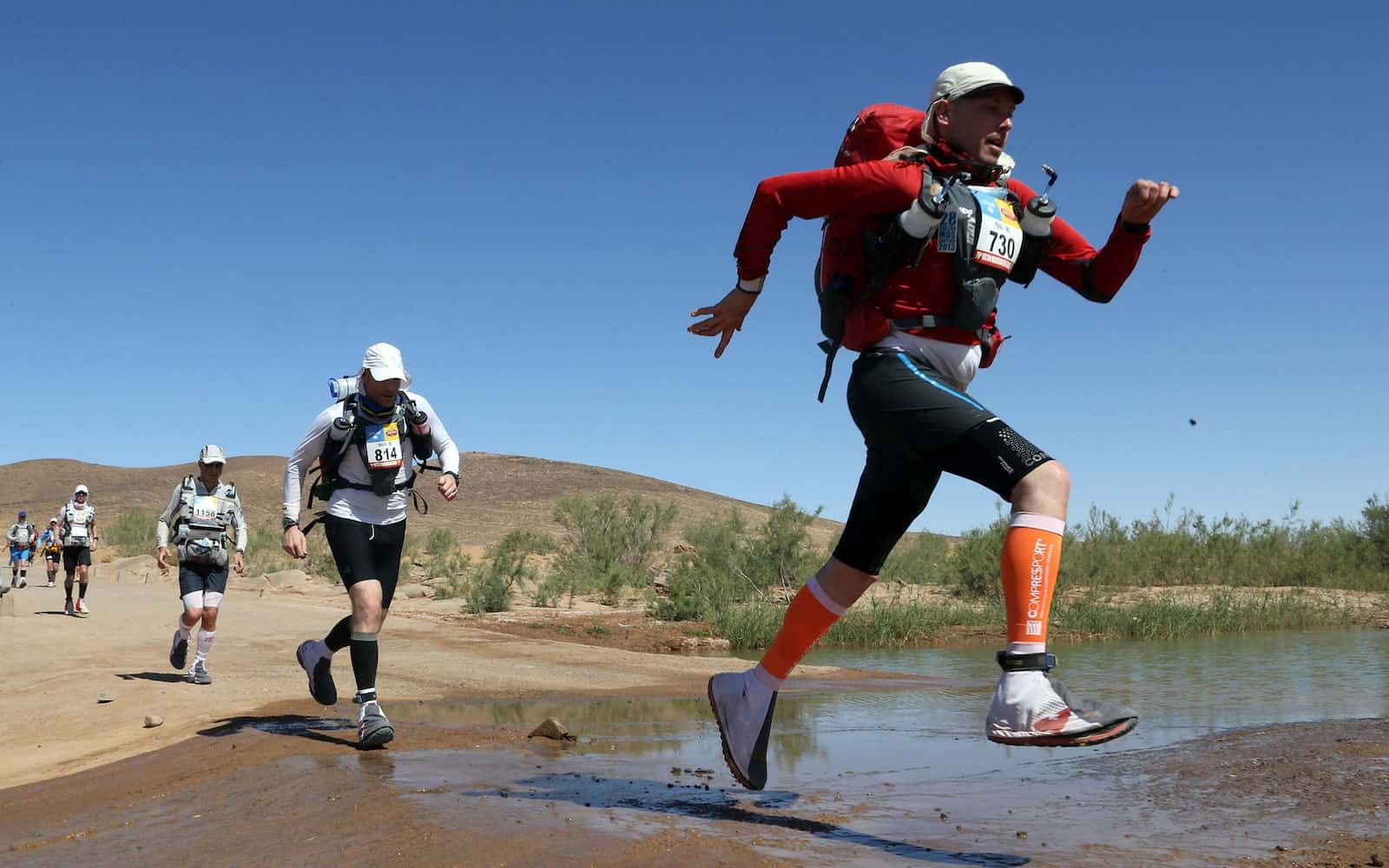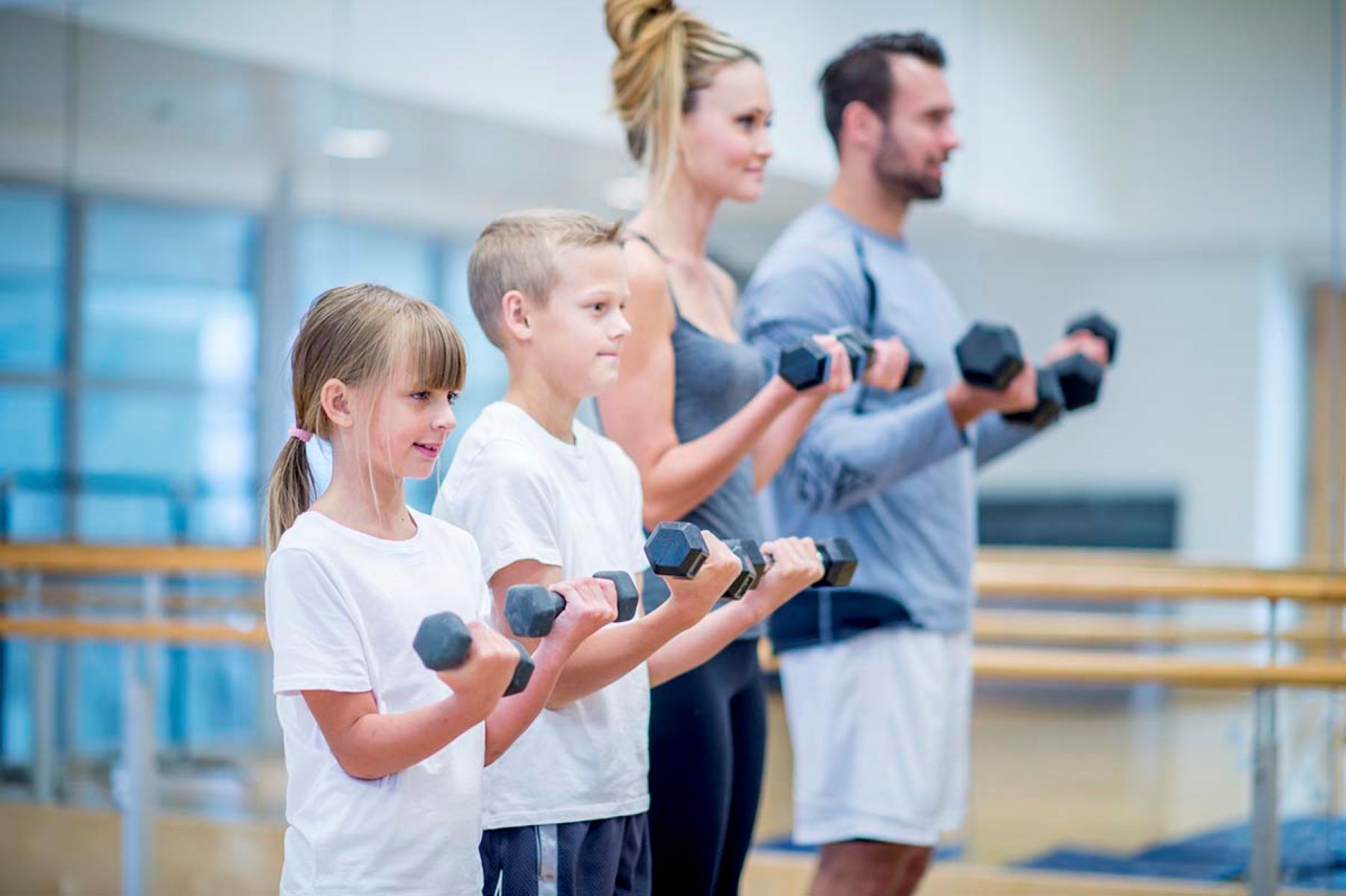Home>Misc>Featured>Which Muscular Endurance Training Can Reduce Low Back Pain?


Featured
Which Muscular Endurance Training Can Reduce Low Back Pain?
Modified: October 24, 2023
Improve your muscle endurance and reduce low back pain with featured exercises targeting specific muscles. Discover the key muscles responsible for a strong and healthy back.
Introduction
Low back pain is a common ailment that affects millions of people worldwide. It can be debilitating, affecting daily activities and overall quality of life. While there can be various causes of low back pain, one important factor to consider is muscle endurance.
Muscle endurance refers to the ability of muscles to sustain contractions over a period of time. When it comes to low back pain, certain muscles play a crucial role in providing stability and support to the spine. If these muscles become weak or fatigued, it can lead to instability and ultimately result in low back pain.
In this article, we will explore the connection between good muscle endurance and low back pain relief. Specifically, we will focus on the core muscles, glute muscles, hamstring muscles, quadriceps muscles, and hip flexor muscles. Understanding how these muscles contribute to low back pain and incorporating exercises to improve their endurance can be key in managing and preventing low back pain.
Whether you are someone who already experiences low back pain or simply want to prevent it, strengthening these specific muscle groups can make a significant difference. By developing strong and enduring muscles, you can provide the necessary support to your spine, reducing the risk of low back pain and improving overall spinal health.
So, if you’re ready to say goodbye to low back pain and hello to a stronger and healthier back, let’s dive into the importance of muscle endurance in specific muscle groups and the exercises that can help build endurance and alleviate low back pain.
Understanding Muscle Endurance and Low Back Pain
Before delving into the specific muscles that play a role in reducing low back pain, it’s important to understand the concept of muscle endurance and how it relates to this condition.
Muscle endurance refers to the ability of a muscle or group of muscles to contract repeatedly and sustain that contraction over a prolonged period of time. It is different from muscle strength, which refers to the maximum force that a muscle can generate.
In the context of low back pain, good muscle endurance is essential for maintaining stability and supporting the spine. The muscles surrounding the spine, particularly the core muscles, need to be able to withstand prolonged periods of activity and provide continuous support to the spine throughout the day.
When these muscles become weak or fatigued, they are unable to provide adequate support to the spine, leading to increased stress and strain on the structures of the lower back. This can result in pain, discomfort, and even injury.
Additionally, poor muscle endurance can also lead to compensatory movements and postural imbalances, further contributing to low back pain. For example, if the core muscles are weak, other muscles may overcompensate and become overused, causing imbalances in muscle activation and potentially leading to pain and dysfunction.
Therefore, improving muscle endurance in the specific muscle groups that support the spine is crucial for reducing low back pain and improving overall spinal health.
It’s important to note that muscle endurance is not something that can be achieved overnight. It requires consistent and targeted training to build the necessary strength and stamina in the muscles. By incorporating specific exercises that challenge and gradually increase the endurance of these muscles, individuals can effectively reduce the risk of low back pain and improve their overall function and quality of life.
In the following sections, we will dive deeper into the specific muscle groups and discuss their role in low back pain, as well as provide exercises to help enhance muscle endurance and alleviate symptoms.
The Role of Core Muscles in Low Back Pain
When it comes to low back pain, the core muscles play a vital role in providing stability and support to the spine. The core muscles include muscles in the abdomen, lower back, pelvis, and hips, and they work together to create a strong and stable center.
Weakness or imbalances in the core muscles can contribute to low back pain. If the core muscles are unable to properly support the spine, it can lead to increased strain on the lower back and potentially result in pain and discomfort.
The core muscles act as a natural corset for the spine, helping to maintain good posture and spinal alignment. They also play a significant role in everyday movements such as bending, lifting, and twisting.
When the core muscles are strong and have good endurance, they provide a solid foundation for the spine, reducing the risk of injury and low back pain. However, if these muscles are weak or become fatigued easily, they may be unable to provide adequate support, leading to instability and increased stress on the spine.
Strengthening the core muscles is therefore crucial for reducing low back pain and improving overall spinal health. By targeting these muscles with specific exercises, individuals can enhance their muscle endurance, improve stability, and alleviate symptoms of low back pain.
Some effective exercises to target the core muscles include planks, bridges, bird dogs, and Russian twists. These exercises engage the deep abdominal muscles, obliques, and back muscles, helping to build endurance and strength in the core.
It’s important to note that when performing these exercises, proper form and technique are essential. It’s recommended to start with lighter resistance or modified versions of the exercises and gradually progress as strength and endurance improve.
Incorporating core strengthening exercises into a regular exercise routine, along with proper posture and body mechanics, can significantly reduce the risk of low back pain and improve overall spinal stability. By building endurance in the core muscles, individuals can enjoy better spinal health and a decreased likelihood of experiencing low back pain.
Exercises to Improve Muscle Endurance in the Core Muscles
Building muscle endurance in the core muscles is crucial for reducing low back pain and improving overall spinal stability. By incorporating specific exercises that target the core muscles, individuals can enhance their endurance, strength, and support to the spine.
Here are some exercises that can help improve muscle endurance in the core:
- Plank: Start by getting into a push-up position with forearms on the ground. Engage your core, align your body in a straight line, and hold the position for as long as possible without letting your hips sag or your back round. Aim to gradually increase the duration of the plank as your endurance improves.
- Bridges: Lie down on your back with knees bent and feet hip-width apart. Engage your core, squeeze your glutes, and raise your hips off the ground until your body forms a straight line from shoulders to knees. Hold the position for a few seconds, then lower back down. Repeat for several repetitions, focusing on maintaining a strong core throughout.
- Bird Dogs: Start on your hands and knees, with hands directly under your shoulders and knees under your hips. Extend your right arm and left leg simultaneously, keeping your core engaged and spine neutral. Hold for a few seconds, then return to the starting position. Repeat on the opposite side and continue alternating sides for several repetitions.
- Russian Twists: Sit on the ground with bent knees and feet flat on the floor. Lean back slightly, keeping your back straight and core engaged. Hold a weight or medicine ball in front of your chest. Twist your torso to one side, bringing the weight or ball with you, and then twist to the other side. Keep the movement controlled and engage your core throughout.
In addition to these exercises, incorporating other core-focused activities such as Pilates, yoga, and swimming can also help improve muscle endurance in the core muscles.
It’s important to start with exercises that match your current fitness level and gradually progress as your endurance improves. Consistency is key, so aim to include core-strengthening exercises in your routine at least two to three times per week.
Remember, proper form and technique are essential to ensure that you are targeting the right muscles and avoiding potential injuries. If you’re unsure about how to perform these exercises correctly, consider seeking guidance from a fitness professional.
By consistently incorporating these exercises into your routine and focusing on improving muscle endurance in the core, you can enhance stability, reduce the risk of low back pain, and enjoy better overall spinal health.
The Importance of Glute Muscles in Reducing Low Back Pain
When it comes to reducing low back pain, it’s essential not to overlook the importance of the glute muscles. The glutes, which are comprised of the gluteus maximus, gluteus medius, and gluteus minimus, are the largest and strongest muscles in the body.
Weak or underdeveloped glutes can contribute to low back pain as they play a crucial role in providing stability and support to the pelvis and spine. When the glutes are weak, other muscles in the lower back and hips may compensate, leading to imbalances and increased stress on the lower back.
Additionally, the glute muscles are responsible for hip extension, which is an important movement during activities such as walking, running, and climbing stairs. When the glutes are weak, there is a tendency to rely more on the lower back muscles for hip extension, which can result in low back pain and discomfort.
Building the endurance of the glute muscles is therefore essential for reducing low back pain and improving overall spinal stability. By strengthening the glutes, the load on the lower back is decreased, and the body can function more efficiently and effectively.
Some effective exercises to improve glute muscle endurance include:
- Squats: Stand with your feet shoulder-width apart, toes pointing slightly outward. Lower your body down as if sitting back into a chair, keeping your chest lifted and knees tracking over your toes. Push through your heels to return to the starting position. Focus on engaging your glutes throughout the movement.
- Lunges: Stand with your feet hip-width apart. Take a step forward with one leg, bending both knees to lower your body down until your back knee is just above the ground. Push through the front heel to return to the starting position. Alternate legs and repeat for several repetitions.
- Glute Bridges: Lie on your back with knees bent and feet hip-width apart. Engage your glutes and raise your hips off the ground, creating a straight line from your shoulders to your knees. Hold for a few seconds, then lower back down. Repeat for several repetitions, focusing on squeezing your glutes at the top of the movement.
- Clamshells: Lie on your side with your knees bent and your feet together. Keeping your feet touching, open your top knee while keeping your hips stacked. Hold for a few seconds, then return to the starting position. Repeat for several repetitions on both sides.
It’s important to perform these exercises with proper form and technique to effectively engage the glute muscles. Gradually increase the intensity and resistance as your endurance improves.
By incorporating these exercises into your regular workout routine and focusing on improving glute muscle endurance, you can enhance your stability, reduce the risk of low back pain, and promote better overall spinal health.
Exercises to Enhance Muscle Endurance in the Glutes
Enhancing muscle endurance in the glutes is crucial for reducing low back pain and improving overall spinal stability. By incorporating specific exercises that target the glute muscles, individuals can build endurance, strength, and support for the pelvis and spine.
Here are some exercises that can help enhance glute muscle endurance:
- Squats: Start with your feet shoulder-width apart, toes slightly turned outward. Lower your body down as if sitting back into an imaginary chair, keeping your chest lifted, and your knees tracking over your toes. Push through your heels to return to the starting position. Focus on engaging your glutes throughout the movement.
- Lunges: Stand with your feet hip-width apart. Take a step forward with one leg, bending both knees to lower your body down until your back knee is just above the ground. Push through the front heel to return to the starting position. Alternate legs and repeat for several repetitions.
- Glute Bridges: Lie on your back with your knees bent and feet hip-width apart. Engage your glutes and raise your hips off the ground, creating a straight line from your shoulders to your knees. Hold for a few seconds, then lower back down. Repeat for several repetitions, focusing on squeezing your glutes at the top of the movement.
- Clamshells: Lie on your side with your knees bent and feet together. Keeping your feet touching, open your top knee while keeping your hips stacked. Hold for a few seconds, then return to the starting position. Repeat for several repetitions on both sides.
In addition to these exercises, incorporating other glute-focused activities such as hip thrusts, step-ups, and lateral band walks can further enhance muscle endurance in the glutes.
When performing these exercises, it’s important to focus on proper form and technique. Engage your glutes and maintain proper alignment throughout the movements. Start with lighter resistance or bodyweight and gradually increase the intensity and resistance as your endurance improves.
Consistency is key when it comes to building glute muscle endurance. Aim to perform these exercises at least two to three times per week. Consider adding them to your regular workout routine or dedicating specific days to glute-focused workouts.
It’s important to listen to your body and rest when needed. Muscles need time to recover and grow stronger, so allow for adequate rest and recovery between workouts.
By consistently incorporating these exercises into your routine and focusing on enhancing muscle endurance in the glutes, you can improve stability, reduce the risk of low back pain, and enjoy better overall spinal health.
The Contribution of Hamstring Muscles to Low Back Pain
When discussing low back pain, it’s important to consider the contribution of the hamstring muscles. The hamstrings are a group of muscles located on the back of the thigh, consisting of the biceps femoris, semitendinosus, and semimembranosus. While they are primarily responsible for flexing the knee, the health and endurance of the hamstrings have significant implications for the lower back.
Weak or tight hamstrings can contribute to low back pain. When the hamstrings are tight, they can pull on the pelvis, causing it to tilt posteriorly. This posterior pelvic tilt alters the curvature of the lumbar spine, leading to increased stress and strain on the lower back muscles and potentially resulting in pain and discomfort.
Additionally, weak hamstrings can lead to muscular imbalances in the posterior chain. When the hamstrings are weak, the muscles located on the front of the body, such as the quadriceps, may become overactive to compensate. This imbalanced muscle activation can lead to poor posture, reduced spinal stability, and ultimately, low back pain.
Building muscle endurance in the hamstrings is crucial for reducing low back pain and maintaining proper pelvic and spinal alignment. By strengthening the hamstrings and improving their flexibility, individuals can alleviate stress on the lower back and improve overall spinal stability.
Here are some exercises to build muscle endurance in the hamstrings:
- Deadlifts: Stand with your feet hip-width apart and a barbell in front of you. Hinge at the hips, keeping your back straight, and grip the bar with your hands just outside your legs. Engage your core and hamstrings, and lift the bar by extending your hips, keeping the bar close to your body. Lower the bar back down in a controlled manner. Focus on engaging your hamstrings throughout the movement.
- Hamstring Curls: Lie face down on a leg curl machine with your ankles under the pad. Contract your hamstrings to curl your legs toward your glutes, then slowly release back down. If a machine is not available, you can also perform hamstring curls using resistance bands or a stability ball.
- Good Mornings: Stand with your feet hip-width apart and place a barbell across your upper back. Hinge at the hips, keeping your back straight, and lower your upper body forward until it is nearly parallel to the ground. Engage your hamstrings and glutes to return to the starting position.
- Single-Leg Romanian Deadlifts: Stand with your feet hip-width apart. Lift one leg slightly off the ground and hinge forward at the hips, reaching your hands towards the ground while extending the lifted leg behind you. Engage your hamstrings and glutes to return to the starting position. Repeat on the other leg.
As with any exercise, it’s important to focus on proper form, start with lighter weights or resistance, and gradually increase as your endurance improves. Consistency is key to building muscle endurance, so aim to include these exercises in your routine at least two to three times per week.
By incorporating these exercises and focusing on building muscle endurance in the hamstrings, individuals can alleviate stress on the lower back, improve spinal stability, and reduce the risk of low back pain.
Exercises to Build Muscle Endurance in the Hamstrings
Building muscle endurance in the hamstrings is essential for reducing low back pain and maintaining proper pelvic and spinal alignment. By incorporating specific exercises that target the hamstrings, individuals can strengthen and enhance the endurance of these muscles, reducing the risk of pain and discomfort in the lower back.
Here are some exercises that can help build muscle endurance in the hamstrings:
- Deadlifts: Stand with your feet hip-width apart and a barbell in front of you. Hinge at the hips, keeping your back straight, and grip the bar with your hands just outside your legs. Engage your core and hamstrings, and lift the bar by extending your hips, keeping the bar close to your body. Lower the bar back down in a controlled manner. Focus on engaging your hamstrings throughout the movement.
- Hamstring Curls: Lie face down on a leg curl machine with your ankles under the pad. Contract your hamstrings to curl your legs toward your glutes, then slowly release back down. If a machine is not available, you can also perform hamstring curls using resistance bands or a stability ball.
- Good Mornings: Stand with your feet hip-width apart and place a barbell across your upper back. Hinge at the hips, keeping your back straight, and lower your upper body forward until it is nearly parallel to the ground. Engage your hamstrings and glutes to return to the starting position.
- Single-Leg Romanian Deadlifts: Stand with your feet hip-width apart. Lift one leg slightly off the ground and hinge forward at the hips, reaching your hands towards the ground while extending the lifted leg behind you. Engage your hamstrings and glutes to return to the starting position. Repeat on the other leg.
When performing these exercises, it’s important to focus on proper form and technique. Engage your hamstrings throughout the movement and avoid relying solely on your lower back or other muscles to complete the exercise.
Start with lighter weights or resistance and gradually increase as your endurance improves. Consistency is key to building muscle endurance, so aim to include these exercises in your routine at least two to three times per week.
In addition to these targeted exercises, incorporating other compound movements such as squats and lunges can also engage the hamstrings and contribute to overall muscle endurance. Proper warm-up and stretching exercises for the hamstrings are also crucial to prevent injuries and promote flexibility.
Listen to your body and rest when needed. Muscles need time to recover and grow stronger, so allow for adequate rest and recovery between workouts.
By consistently incorporating these exercises into your routine and focusing on building muscle endurance in the hamstrings, you can improve the strength and stability of these muscles, reduce the risk of low back pain, and promote better overall spinal health.
The Significance of Quadriceps Muscles for Low Back Pain Relief
When it comes to finding relief from low back pain, it’s important to consider the significance of the quadriceps muscles. The quadriceps, also known as the quads, are a group of muscles located on the front of the thigh. While their primary function is to extend the knee, these muscles also play a crucial role in stabilizing the pelvis and relieving low back pain.
Weak or imbalanced quadriceps can contribute to low back pain. When the quadriceps are weak, the body may compensate by relying more on the lower back muscles for stability, leading to increased stress and strain on the lumbar region.
In addition, tight quadriceps can affect pelvic alignment, pulling the pelvis forward and causing an anterior pelvic tilt. This tilt can put increased pressure on the lower back and contribute to low back pain and discomfort.
Building muscle endurance and balance in the quadriceps is therefore essential for low back pain relief and improved spinal stability. Strengthening the quadriceps muscles can help alleviate stress on the lower back and promote better overall pelvic and spinal alignment.
Here are some exercises that can help build muscle endurance in the quadriceps:
- Squats: Stand with your feet shoulder-width apart, toes slightly turned out. Lower your body down as if sitting back into a chair, keeping your chest lifted and knees tracking over your toes. Push through your heels to return to the starting position. Focus on engaging your quadriceps throughout the movement.
- Lunges: Stand with your feet hip-width apart. Take a step forward with one leg, bending both knees to lower your body down until your back knee is just above the ground. Push through the front heel to return to the starting position. Alternate legs and repeat for several repetitions.
- Leg Press: Sit on a leg press machine with feet hip-width apart on the platform. Push the platform away from your body by extending your knees until your legs are straight. Slowly return to the starting position, allowing your knees to bend. Focus on engaging your quadriceps throughout the movement.
- Step-ups: Stand in front of a step or platform. Step one foot onto the step, pushing through the heel to lift your body up. Lower back down and repeat on the opposite leg. Continue alternating legs for several repetitions.
It’s important to perform these exercises with proper form and technique. Start with lighter weights or resistance, and gradually increase as your endurance improves. Consistency is key, so aim to include these exercises in your routine at least two to three times per week.
Incorporating other exercises that engage the quadriceps, such as cycling, walking, and stair climbing, can also contribute to overall muscle endurance. Stretching exercises for the quadriceps are also important to maintain flexibility and prevent muscle imbalances.
By consistently incorporating these exercises into your routine and focusing on building muscle endurance in the quadriceps, you can relieve stress on the lower back, improve spinal stability, and reduce the risk of low back pain.
Exercises to Increase Muscle Endurance in the Quadriceps
In order to increase muscle endurance in the quadriceps and provide relief from low back pain, incorporating specific exercises that target these muscles is crucial. By strengthening and enhancing the endurance of the quadriceps, individuals can reduce stress on the lower back and promote better overall pelvic and spinal stability.
Here are some exercises that can help increase muscle endurance in the quadriceps:
- Squats: Stand with your feet shoulder-width apart, toes slightly turned out. Lower your body down as if sitting back into a chair, keeping your chest lifted, and your knees tracking over your toes. Push through your heels to return to the starting position. Focus on engaging your quadriceps throughout the movement.
- Lunges: Stand with your feet hip-width apart. Take a step forward with one leg, bending both knees to lower your body down until your back knee is just above the ground. Push through the front heel to return to the starting position. Alternate legs and repeat for several repetitions.
- Leg Press: Sit on a leg press machine with feet hip-width apart on the platform. Push the platform away from your body by extending your knees until your legs are straight. Slowly return to the starting position, allowing your knees to bend. Focus on engaging your quadriceps throughout the movement.
- Step-ups: Stand in front of a step or platform. Step one foot onto the step, pushing through the heel to lift your body up. Lower back down and repeat on the opposite leg. Continue alternating legs for several repetitions.
When performing these exercises, it’s important to maintain proper form and technique. Focus on engaging your quadriceps and avoid putting excessive stress on the knees. Start with lighter weights or resistance and gradually increase as your endurance improves.
Incorporating these exercises into your routine two to three times per week, along with other activities that engage the quadriceps like cycling or stair climbing, can help increase muscle endurance. It’s also essential to incorporate stretching exercises to maintain flexibility in the quadriceps and prevent muscle imbalances.
Listen to your body and rest when needed. Allow for adequate recovery between workouts to avoid overuse injuries. Muscle endurance takes time to build, so be patient and consistent in your training.
Remember to always warm up before exercising, and consult with a healthcare professional or fitness expert if you have any underlying health conditions or concerns.
By consistently incorporating these exercises into your routine and focusing on increasing muscle endurance in the quadriceps, you can alleviate stress on the lower back, improve spinal stability, and reduce the risk of low back pain.
Strengthening the Hip Flexor Muscles for Low Back Pain Management
When it comes to managing low back pain, it’s important to focus not only on the muscles of the back but also on the hip flexor muscles. The hip flexors, which include the iliopsoas and rectus femoris, are a group of muscles located at the front of the hip and are responsible for flexing the hip joint.
Tight or weak hip flexors can contribute to low back pain. When the hip flexors are tight, they can pull on the pelvis, causing it to tilt forward. This anterior pelvic tilt can lead to increased stress on the lower back muscles, resulting in pain and discomfort.
Strengthening the hip flexor muscles is essential for low back pain management as it helps to restore balance and stability in the pelvis. By strengthening these muscles, individuals can alleviate stress on the lower back and promote better overall spinal alignment.
Here are some exercises to strengthen the hip flexor muscles:
- Mountain Climbers: Start in a high plank position with your hands directly under your shoulders. Bring one knee in towards your chest, then quickly switch legs, alternating the movement. Maintain a straight back and engage your core throughout the exercise.
- Leg Raises: Lie flat on your back with your legs extended. Lift one leg off the ground, keeping it straight, until it forms a 90-degree angle with the floor. Slowly lower the leg back down and repeat with the opposite leg.
- Reverse Crunches: Lie flat on your back with your knees bent and feet flat on the floor. Bring your knees toward your chest, lifting your hips off the ground and curling your tailbone towards your belly button. Slowly lower your hips back down to the starting position.
- Lunges with a Knee Raise: Stand with your feet hip-width apart. Step forward into a lunge with one leg, lowering your back knee towards the ground. As you push back up, bring the back leg forward, raising your knee towards your chest. Repeat on the opposite leg.
It’s important to perform these exercises with proper form and technique to effectively engage the hip flexor muscles. Start with a focus on controlled movements and gradually increase the intensity and difficulty as your muscle endurance improves.
Incorporating these exercises into your routine two to three times per week can help strengthen the hip flexors. It’s also essential to incorporate other activities that promote hip flexibility and mobility, such as dynamic stretching, yoga, and Pilates.
Remember to listen to your body and rest when needed. Muscles need time to recover and grow stronger, so allow for adequate rest and recovery between workouts.
By consistently incorporating these exercises into your routine and focusing on strengthening the hip flexor muscles, you can alleviate stress on the lower back, improve spinal stability, and reduce the risk of low back pain.
Exercises to Strengthen the Hip Flexors and Improve Muscle Endurance
Strengthening the hip flexor muscles is crucial for improving muscle endurance and managing low back pain. By incorporating specific exercises that target the hip flexors, individuals can increase strength, reduce tightness, and promote better overall spinal alignment.
Here are some exercises that can help strengthen the hip flexors and improve muscle endurance:
- Mountain Climbers: Start in a high plank position with your hands directly under your shoulders. Bring one knee in towards your chest, then quickly switch legs, alternating the movement. Maintain a straight back and engage your core throughout the exercise.
- Leg Raises: Lie flat on your back with your legs extended. Lift one leg off the ground, keeping it straight, until it forms a 90-degree angle with the floor. Slowly lower the leg back down and repeat with the opposite leg.
- Reverse Crunches: Lie flat on your back with your knees bent and feet flat on the floor. Bring your knees toward your chest, lifting your hips off the ground and curling your tailbone towards your belly button. Slowly lower your hips back down to the starting position.
- Lunges with a Knee Raise: Stand with your feet hip-width apart. Step forward into a lunge with one leg, lowering your back knee towards the ground. As you push back up, bring the back leg forward, raising your knee towards your chest. Repeat on the opposite leg.
Perform these exercises with proper form and technique to effectively engage the hip flexor muscles. Focus on controlled movements and gradually increase the intensity and difficulty as your muscle endurance improves.
Incorporating these exercises into your routine two to three times per week can help strengthen and improve muscle endurance in the hip flexors. It’s also beneficial to incorporate other activities that promote hip flexibility, such as dynamic stretching, yoga, and Pilates.
Remember to listen to your body and rest when needed. Adequate rest and recovery between workouts allow muscles to repair and grow stronger.
In addition to exercise, maintaining proper posture throughout the day can also help alleviate stress on the hip flexors and lower back. Avoid prolonged sitting and incorporate standing and walking breaks into your daily routine.
Consistency is key when it comes to strengthening the hip flexors and improving muscle endurance. Set realistic goals, track your progress, and celebrate small victories along the way.
By consistently incorporating these exercises into your routine and focusing on strengthening the hip flexor muscles, you can improve muscle endurance, reduce tightness, and promote better overall spinal alignment, ultimately managing low back pain more effectively.
Conclusion
In the quest for managing low back pain and promoting a healthy spine, building muscle endurance in specific muscle groups is crucial. The core muscles, glutes, hamstrings, quadriceps, and hip flexors all play significant roles in providing stability, support, and proper alignment to the spine.
By incorporating targeted exercises that strengthen and enhance muscle endurance in these muscle groups, individuals can reduce the risk of low back pain and improve overall spinal stability. Consistency is key in building muscle endurance, so it’s important to incorporate these exercises into a regular routine.
For the core muscles, exercises such as planks, bridges, and Russian twists can strengthen the deep abdominal and back muscles, promoting a strong and stable core. Strengthening the glute muscles is important for reducing low back pain, and exercises like squats, lunges, and glute bridges can enhance their endurance and support to the spine.
The hamstring muscles also contribute to low back pain relief, and exercises such as deadlifts, hamstring curls, and good mornings can increase their endurance and reduce strain on the lower back. Strengthening the quadriceps through exercises like squats, lunges, and leg presses can alleviate stress on the lower back and promote better overall spinal stability.
Lastly, focusing on strengthening the hip flexor muscles with exercises like mountain climbers, leg raises, reverse crunches, and lunges with knee raises can help manage low back pain and improve overall spinal alignment.
Remember, proper form, technique, and gradual progression are essential when performing these exercises to ensure effective engagement of the targeted muscles and prevent injury.
Incorporating stretching and flexibility exercises for these muscle groups, along with maintaining proper posture throughout the day, can further support low back pain management and promote a healthy spine.
By consistently working on improving muscle endurance in the core, glutes, hamstrings, quadriceps, and hip flexors, individuals can experience reduced low back pain, improved spinal stability, and an overall better quality of life. If you are experiencing chronic or severe low back pain, it is important to consult with a healthcare professional for proper evaluation and guidance.









